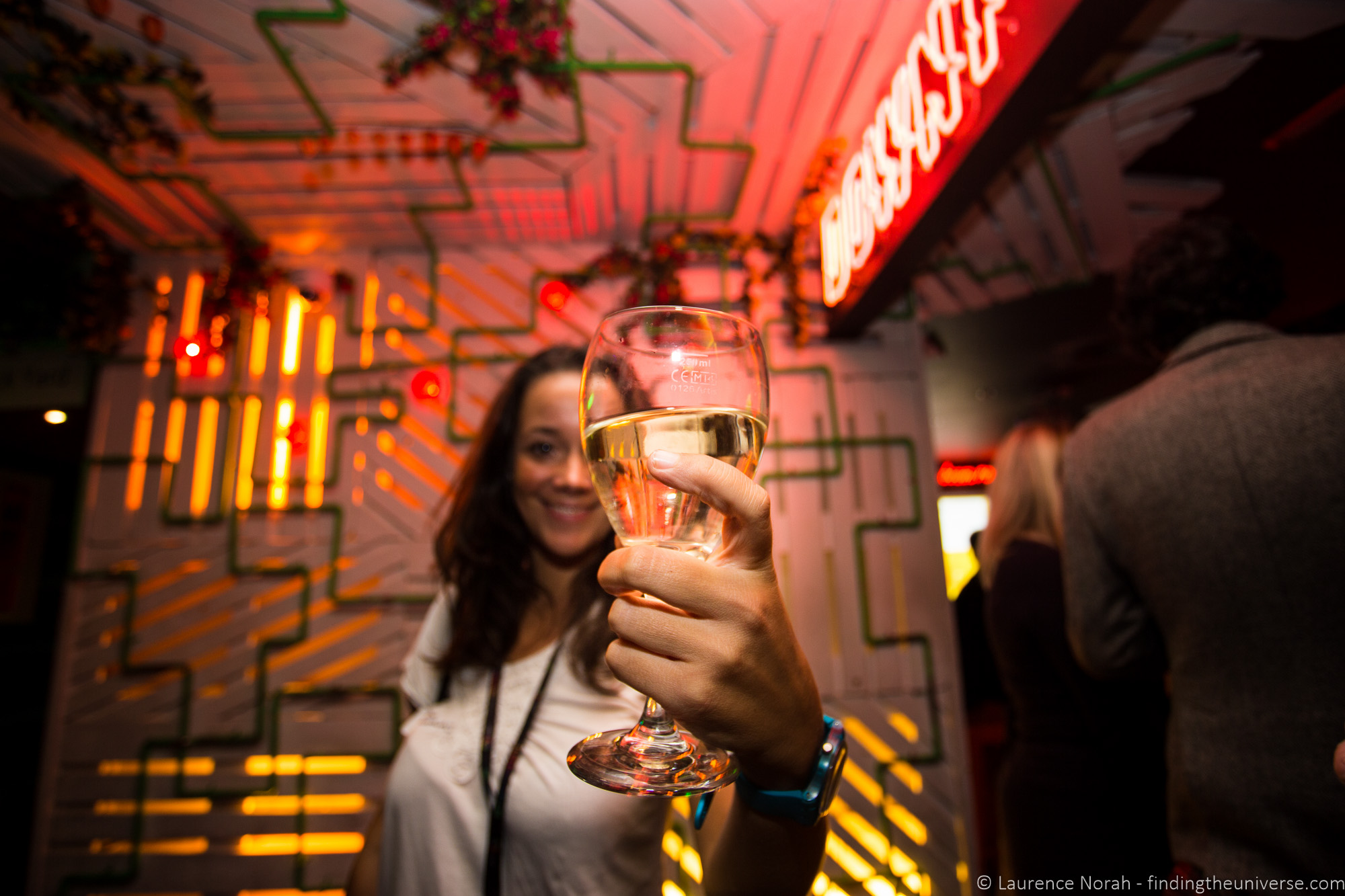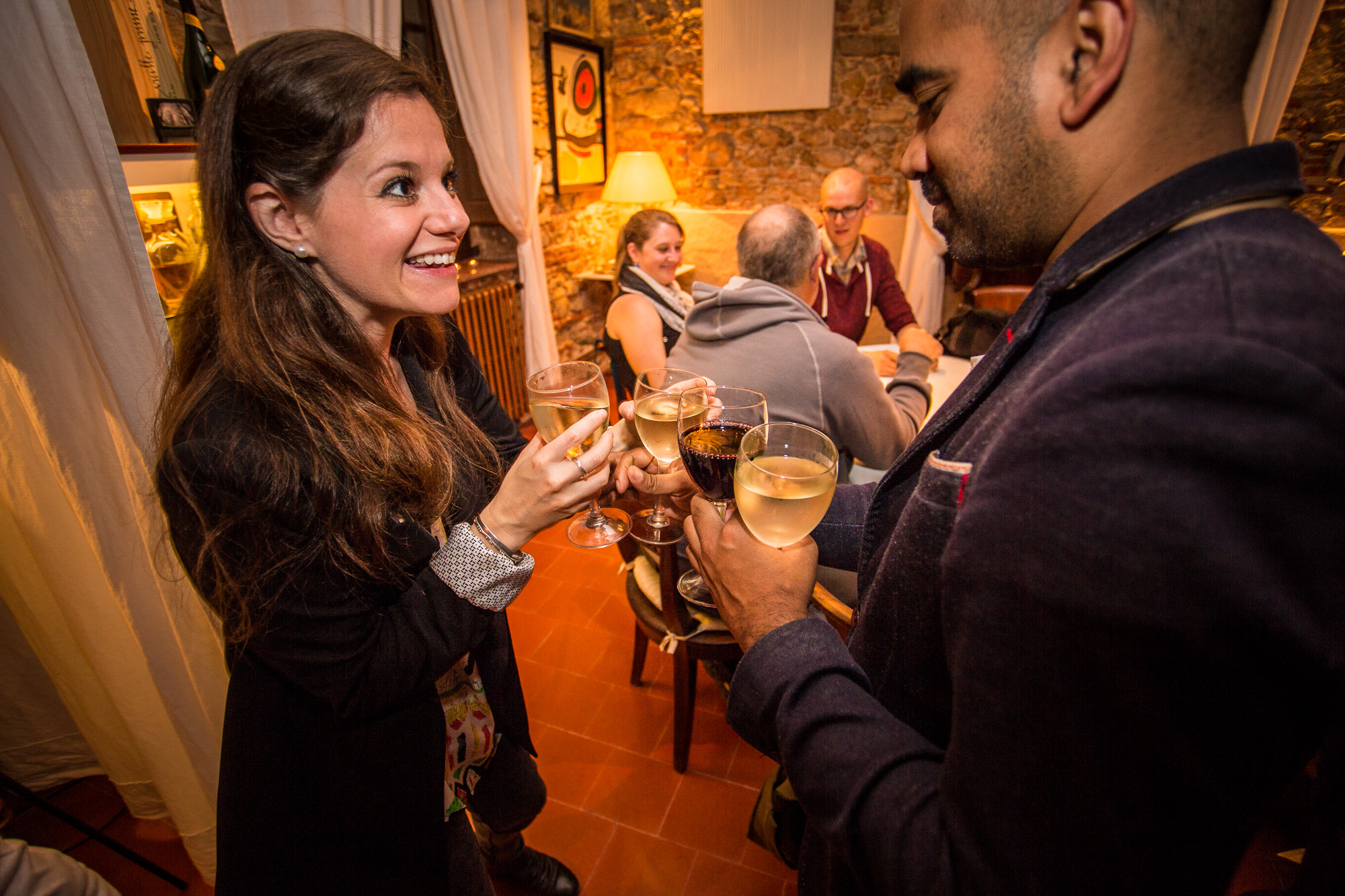Shooting events is quite a different ballgame than other types of photography. The challenge that comes with event photography, whether that means capturing a night party, a music festival, a wedding or a conference, can be challenging in the best way possible.
Recently I’ve had the pleasure of shooting a couple of major conferences (and associated after parties!), as well as the SXSW music festival in Austin, Texas. I’ve learned a lot about event photography from these shoots — here are some of the lessons I learned along the way.
Keep these photography tips in mind the next time you’re shooting.

Photos via Laurence Norah, Finding the Universe
1. Bring the right event photography gear
Lenses
The most important gear for shooting events is the lens on your camera, which needs to have a fast aperture, ideally f/2.8 and faster. Don’t panic, though: while telephoto lenses can be pricey at these aperture ranges, you can pick up some fantastic primes for a fraction of the price.
Dependable options for event photography for both Canon are Nikon shooters are the 24-70 f/2.8 and the 70-200 f/2.8. These are beasts of lenses that offer excellent sharpness, magnificent low-light performance, and fast focusing. They also come at a hefty price.
Personally, I shoot with the 70-200 for candid shots, and then I use a wide angle 17-40 with a flash to get a slightly different look. The wide angle is a bit slow (f/4), but with the high ISO capability of my full-frame Canon, this isn’t so much of an issue.
Other great lenses for event photography (for Canon) include the 16-35 f/2.8, the 50mm prime (f/1.8, f/1.4 or f/1.2) and the 85mm prime (also in f/1.8 – f/1.2 configurations). The faster the lens, the more expensive it is! For specific events, you might also find a fisheye lens adds an interesting twist, and for weddings, then a macro will let you capture intimate details that other lenses would miss.
Camera bodies
If you’re shooting low-light events and want to keep to natural light, you’re going to want a camera that performs well at high ISO settings, in the range of 1600 – 12800 or higher. This is where many lower-end cameras start to show their limitations.
I would recommend a full-frame camera if you can stretch to — the larger sensor size results in more light being captured, and the newer models from Canon, Sony and Nikon offer excellent performance at high ISOs, producing perfectly usable images with little noise even at 6400 ISO and above.
Flash
For some events, you are also going to want a flash. Flash photography is a whole different photography skill, beyond the scope of this article (but we cover it in this post). Where possible, I prefer to shoot using available light, but I do love the creative possibilities that a flash can offer, and sometimes you just need one to get the shot.
If you do get a flash, be sure to learn how to use it properly, and invest in a softbox or similar set up to avoid creating that shiny, caught-in-the-headlights look. Walls will become your friend, as you’ll want to bounce the light off them. I’d also advise looking into the creative possibilities that second curtain sync offers you with a slow shutter speed.
Learn more about flash photography in “Off-Camera Flash Photography” »

For serious events, I’d recommend having a second body to save you from having to switch lenses regularly, and if you’re brave enough to shoot weddings, well, you’ll want a second copy of everything you own if humanly possible, from memory cards to lenses. Now, let’s get on to moving that mode dial.
2. Pick smart camera settings
First, you’re going to want to shoot in RAW. If you are shooting an event where timing is more important than image flexibility, and you have to get your photos up as fast as possible, then RAW+JPEG is a good option, but I would definitely advise you shoot in RAW so you can fix your white balance after the fact.
Event lighting can be all kinds of fun to deal with, causing people to turn weird shades of green or pink, but if you shoot in RAW you can fix that up afterward.
Next, I’d advise shooting in either manual or aperture-priority mode. If the light levels are low, then open up that aperture and dial up the ISO. You can fix noise in post-processing — you can’t fix blurry images as a result of having a slow shutter speed. You want to keep the shutter speed faster than 1/60th of a second to avoid the movement of people causing blur (unless that’s something you are trying to capture), which might mean having to shoot at f /2.8 and ISO 6400, or even more.

If you’re shooting something like a sporting event where the action is fast, then you might want to shoot in shutter-priority mode, allowing you to freeze time at high shutter speeds. Obviously, you’re going to need plenty of light for that to work well!
4. Consider etiquette when getting the shot
The first thing to remember is that the event you are shooting is not about you. Sure, you are there to capture the moments, but you certainly don’t want to be the photographer getting in the way of everyone else’s moments.

For some events, there are strict rules governing photographers. At music festivals, for example, there’s normally a “three and out” rule — meaning you get to stand between the audience and the performers for the first three songs, and then you have to clear the way. At big shows, the die-hard fans have probably waited a long while to get a front of stadium position, and they certainly don’t want to be staring at the back of your head for the whole show.
For events like weddings, there are of course shots that you have to get, but you need to remember to be polite and calm. Again, the day is not about you — although woe be the photographer who doesn’t get the shots the bridal party want!
For other events, just go with your instinct. Work with the crowd and the people, and see what you can get.
4. Look for moments
Event photography, in my mind, is all about capturing the moments. If you’re shooting a party, these are the times people are laughing or engaging with each other. For music, when the band interacts with the crowd. At a wedding, it might be an emotional relative or a stolen glance between the happy couple.
Capturing these moments is what makes for the great photos that everyone will love to see. You’ll need to keep your eyes open and be constantly aware of what’s going on around you. For events like weddings where there are key moments, you’ll need to be prepared well in advance and have everything set up so you don’t miss the shot.

As with everything, practice makes perfect. All the above will help, but to really shine at event photography, you need to get out there and get practicing. Learn what works and what doesn’t, learn how to use the light, learn how to work with people, learn how to post-process efficiently. Reading will only get you so far. Get out there…and good luck!

Share tips, start a discussion or ask one of our experts or other students a question.
No Responses to “4 Expert Event Photography Tips for More Captivating Photos”